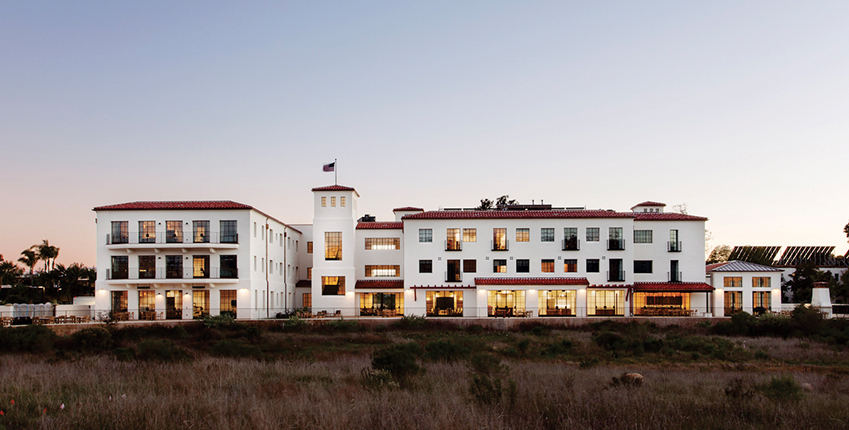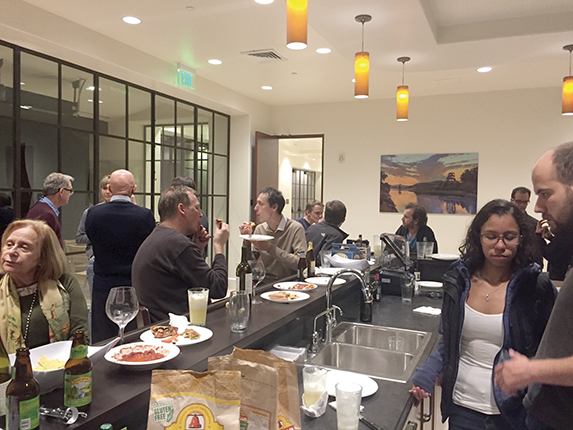Theory institute opens residence hall for visitors
DOI: 10.1063/PT.3.3522
Visitors to the Kavli Institute for Theoretical Physics (KITP) at the University of California, Santa Barbara, can now lodge together in a sleek new residence hall. Before the hall opened in January, visitors were scattered across town in hotels, rental quarters, and campus housing. The new building is named for Charles T. Munger, who gave $65 million for its construction. Munger is the vice chairman of Berkshire Hathaway, the conglomerate founded by Warren Buffett.

New guest housing opened in January at the Kavli Institute for Theoretical Physics at the University of California, Santa Barbara.
PATRICK PRICE

Some 700 visitors come to KITP each year for three weeks or longer, and another 600 come for shorter visits. Roughly half of the visitors come from outside the US. The institute hosts about 10 topical programs each year, on everything from the mysteries of massive stars to the physics of hearing. Two or three 10- to 12-week programs run simultaneously.
The main goal of the new residence “is to create an environment that allows people to keep interacting day and night and weekends,” says KITP director Lars Bildsten. “We expect it to have an impact on collaborations. We wanted to construct a facility that would transform the lives of our visitors.”
A couple of kilometers from the main KITP building, the residence can house up to 61 people in single and double units and seven-room suites, each with its own kitchen. There is also a large communal kitchen, a formal drawing room, a children’s playroom, exercise rooms, and more. “There is privacy and space to congregate,” says Bildsten. And, he says, “there are chalkboards everywhere. Yes, chalk.”

On a Friday evening in January, participants in a program on turbulence hang out in one of the new KITP residence’s bar areas.
MICHAEL GRAHAM/UNIVERSITY OF WISCONSIN–MADISON

Paula Szkody was among the first visitors to stay in the residence. The University of Washington astronomer was there for six weeks for a workshop on magnetohydrodynamics of accretion disks. “We had a couple of gatherings and barbecues,” she says, and there was some cross-talk with people from the concurrent workshop on turbulence. “The ambience was great.”
“Typically, I spend hours with colleagues in a work environment and don’t get to know them outside of work,” says Ehsan Moravveji, a postdoc at the Institute of Astronomy at KU Leuven, Belgium. The KITP residence “will enhance communications and let scientists connect and live together outside the academic environment. I find it wise and clever.”
As Physics Today went to press, Moravveji, who is Iranian, was waiting to see if his visa would come through so he could present an invited talk on massive stars at a conference at KITP in late March. If not, he planned to give his talk from Leuven by either prerecording or live-streaming it over the internet.
More about the Authors
Toni Feder. tfeder@aip.org
